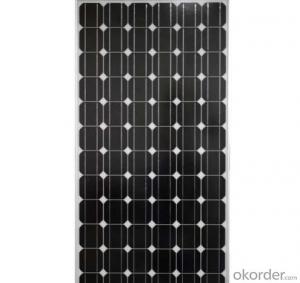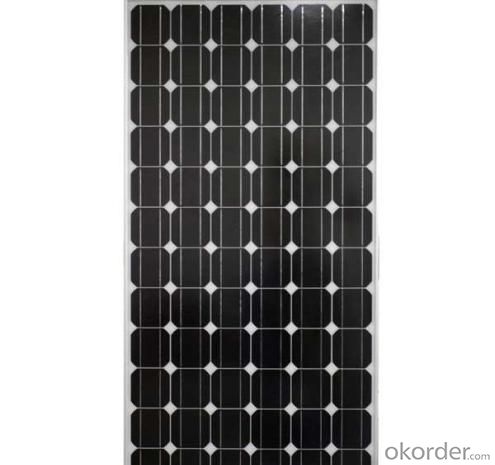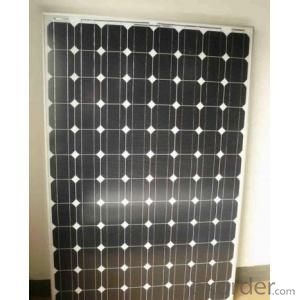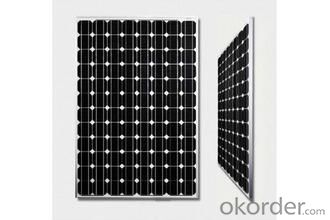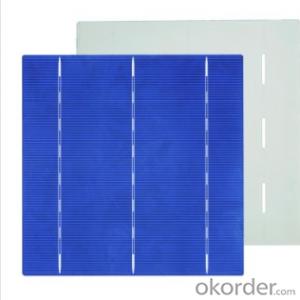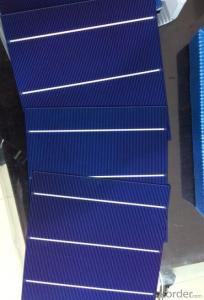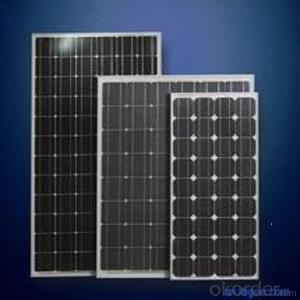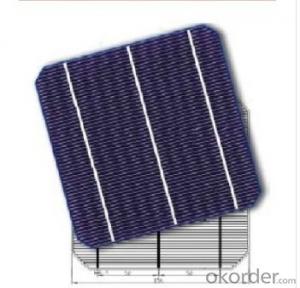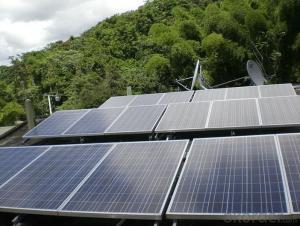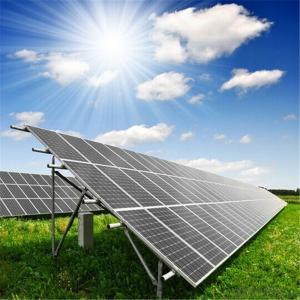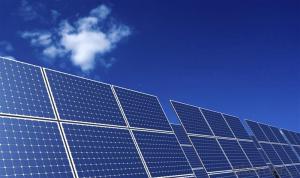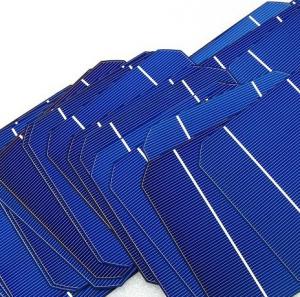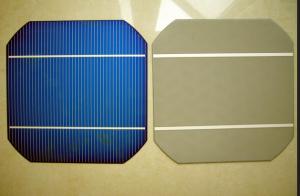Solar Cells Inc 260w Solar Panel for 35kw Solar Home Solution with 25 Years Quality Assurance
- Loading Port:
- Shanghai
- Payment Terms:
- TT OR LC
- Min Order Qty:
- 26 pc
- Supply Capability:
- 5000 pc/month
OKorder Service Pledge
OKorder Financial Service
You Might Also Like
Specification
156x156mm 3BB Poly Solar Cells 6x6 with Sperior Quality for Solar Panel
Production description
A photovoltaic system, also solar PV power system, or PV system, is a power system designed to supply usable solar power by means ofphotovoltaics. It consists of an arrangement of several components, including solar panels to absorb and convert sunlight into electricity, a solar inverter to change the electric current from DC to AC, as well as mounting, cabling and other electrical accessories to set up a working system. It may also use a solar tracking system to improve the system's overall performance and include anintegrated battery solution, as prices for storage devices are expected to decline.
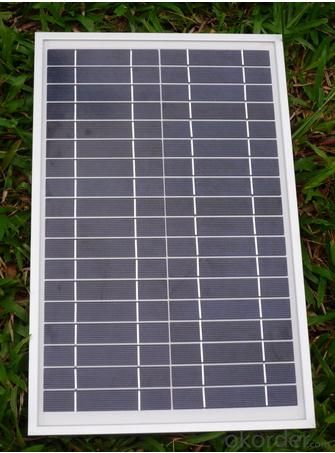
Feature
1.High conversion efficiencies resulting in superior power output performance.
2.Outstanding power output even in low light or high temperature conditions
3.Optimized design for ease of soldering and lamination
4.Long-term stability,reliability and performance
5.Low breakage rate
6.Color uniformaity
Physical characteristic
1. Rigorous quality control meets the highest international standards.
2. High-transmissivity low-iron tempered glass, strong aluminium frame.
3. Using UV-resistant silicon.
4. IS09001/14001/CE/TUV/UL
- Q: How long does it take to install solar cells on a rooftop?
- The installation time for solar cells on a rooftop can vary depending on various factors such as the size of the system, complexity of the installation, and the experience of the installation team. However, on average, a typical residential installation can take anywhere from one to three days.
- Q: What is the difference between a monocrystalline and polycrystalline solar cell?
- The main difference between a monocrystalline and polycrystalline solar cell lies in their composition and manufacturing process. Monocrystalline solar cells are made from a single, high-purity silicon crystal. This results in a uniform structure with a consistent and orderly arrangement of atoms. Monocrystalline cells are known for their high efficiency and sleek appearance, as they typically have a black or dark blue color. On the other hand, polycrystalline solar cells are made from multiple silicon crystals. These crystals are smaller and not as perfectly aligned, leading to a more random arrangement of atoms. Polycrystalline cells are usually recognizable by their bluish hue and a fragmented appearance. In terms of efficiency, monocrystalline solar cells tend to have a slightly higher efficiency rate compared to polycrystalline cells. However, recent advancements in technology have narrowed this efficiency gap, and polycrystalline cells are now approaching the efficiency levels of monocrystalline cells. Another difference is the cost. Monocrystalline solar panels are generally more expensive due to the higher purity of silicon required and the more complex manufacturing process. Polycrystalline panels, on the other hand, are more cost-effective and offer a lower price per watt. In summary, while monocrystalline solar cells have higher efficiency and a more uniform appearance, polycrystalline cells are more cost-effective and have made significant improvements in efficiency in recent years. The choice between the two ultimately depends on individual preferences, budget, and specific project requirements.
- Q: Can solar cells be used in hotels?
- Yes, solar cells can definitely be used in hotels. Solar panels can be installed on the rooftops or surrounding areas of hotels to harness solar energy and generate electricity. This renewable energy source can help hotels reduce their reliance on traditional power grids, lower their carbon footprint, and save on electricity costs in the long run. Additionally, hotels can also utilize solar power for heating water, lighting outdoor spaces, or charging electric vehicles, further enhancing their sustainability initiatives.
- Q: Can solar cells be used to power electric gates?
- Yes, solar cells can be used to power electric gates. Solar cells convert sunlight into electricity, which can be stored in batteries and used to power various devices, including electric gates. This allows for a sustainable and environmentally friendly solution to power electric gates without relying on traditional energy sources.
- Q: What is the effect of dust or dirt on solar cell performance?
- The effect of dust or dirt on solar cell performance is that it reduces the amount of sunlight reaching the solar cells, thereby decreasing their efficiency and overall power output.
- Q: Can solar cells be used in water purification systems?
- Yes, solar cells can be used in water purification systems. Solar cells can generate electricity from sunlight, which can power various components of water purification systems such as pumps, filters, and disinfection processes. This enables the system to operate independently from the grid, making it suitable for remote or off-grid locations. Additionally, solar energy is a clean and sustainable power source, aligning with the environmentally-friendly nature of water purification processes.
- Q: Is there any easy way to make a solar cell? I want to make a DIY solar cell with my child at home.
- If you know the principle of solar cells, it can be easy for you to make it yourself.
- Q: Can solar cells be used in desert environments?
- Yes, solar cells can be used in desert environments. In fact, desert regions are ideal for solar energy production due to the high amount of sunlight available. The arid climate and lack of cloud cover in deserts contribute to optimal solar panel performance, making them efficient in generating electricity. Additionally, the vast open spaces in deserts provide ample land for large-scale solar power plants.
- Q: Can solar cells be used in floating solar farms?
- Yes, solar cells can definitely be used in floating solar farms. Floating solar farms, also known as floating solar panels or floating photovoltaic (PV) systems, are an innovative approach to harness solar energy by placing solar panels on a body of water. These systems offer several advantages such as increased energy efficiency due to the cooling effect of water, reduced land requirements, and minimized evaporation from the water surface. Therefore, solar cells are a suitable and effective solution for generating renewable energy in floating solar farms.
- Q: Can solar cells be used for powering agricultural equipment?
- Yes, solar cells can be used for powering agricultural equipment. Solar energy can be harnessed through photovoltaic (PV) panels and used to power various agricultural machinery and equipment such as pumps, irrigation systems, electric fences, and machinery used for crop processing. This provides a sustainable and environmentally friendly alternative to traditional fuel-based power sources, reducing operating costs and minimizing carbon emissions in the agricultural sector.
Send your message to us
Solar Cells Inc 260w Solar Panel for 35kw Solar Home Solution with 25 Years Quality Assurance
- Loading Port:
- Shanghai
- Payment Terms:
- TT OR LC
- Min Order Qty:
- 26 pc
- Supply Capability:
- 5000 pc/month
OKorder Service Pledge
OKorder Financial Service
Similar products
Hot products
Hot Searches
Related keywords
